Rubjerg Knude lighthouse is a must-see – here’s why
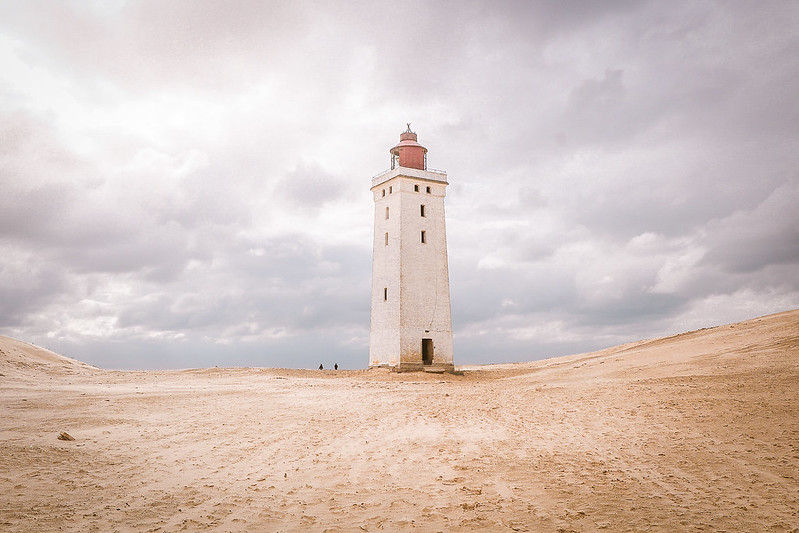
Rubjerg Knude is one of the prettiest places in Denmark. The wind-whipped coast, the howling wind and the relentless forces of Mother Nature is what makes this place so fascinating.
I’ve had the chance to visit Rubjerg Knude several times and in all kinds of weather. The more dramatic the weather, the more beautiful it seems because that’s when you really get to feel the power of nature.
In this post, I’ll share all the info and historical background you need to visit on your own.
Read next: 12 things to do in North Jutland, Denmark
This post contains referral links for products I love. Adventurous Miriam earns a small commission at no extra cost to you if you purchase through my links. I appreciate your support ♡ Learn more
A brief history of Rubjerg Knude
In North Jutland, you’ll find the impressive Rubjerg Knude (Danish: Rubjerg Knude Fyr).
The lighthouse was built in 1900 on top of Lønstrup Klint, approximately 200m inland. This was the highest point of the coastal slope, 60 metres above sea level.
However, the drifting sands and coastal erosion soon became a big problem, so bushes and trees were planted between 1910 and 1920 to improve the conditions. Despite this effort, the coast continued to erode on average 1.5 metres a year, and by the 1950s, all plants were removed.
The sand dunes eventually became so vast it covered the light of the lighthouse, and it was decommissioned on August 1st 1968. Some time after, the buildings were used by Vendsyssel Historical Museum (the Sand Drift Museum), which gives details on the history of the region. But the shifting sand dune only grew larger and started to cover the buildings until they were abandoned in 2002.
Read next: 6 best routes for a road trip in Denmark
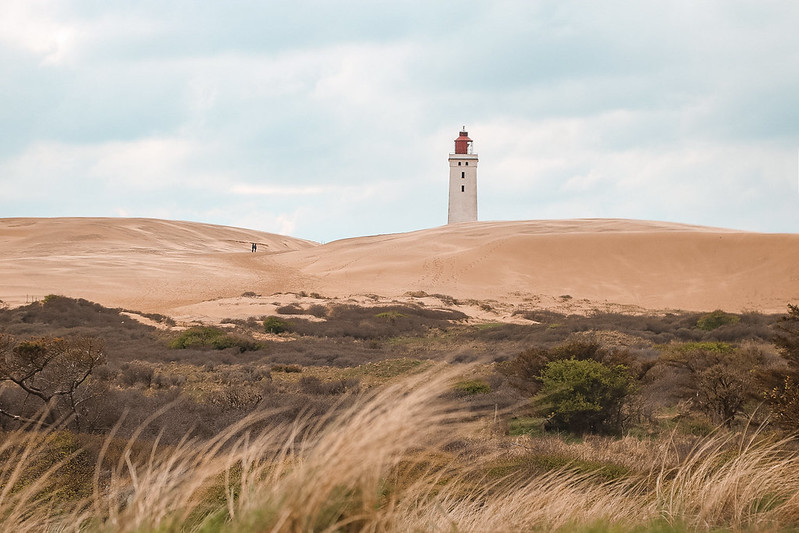
Moving a 720 tonne lighthouse
When the 23m high lighthouse was built, there were no large sand dunes around it. As the years passed, the North Sea had eaten into the cliff on which the lighthouse stood, leaving it only a few metres from the edge. Coupled with the shifting sand dunes caused by high coastal winds, everyone had more or less just accepted the fact that one day the lighthouse would give way to the sea.
But then something happened.
Denmark’s environment ministry decided to save the 120-year-old lighthouse before it toppled over the side of a sand dune cliff.
In October 2019, Rubjerg Knude lighthouse was put on wheels and rails and moved 80m back from the North Sea coastline, allowing the lighthouse another 40 years of safety. When it was first constructed, Rubjerg Knude lighthouse was 200m from the shore. Before its move in October, it was 6m from the water.
Before (2017)
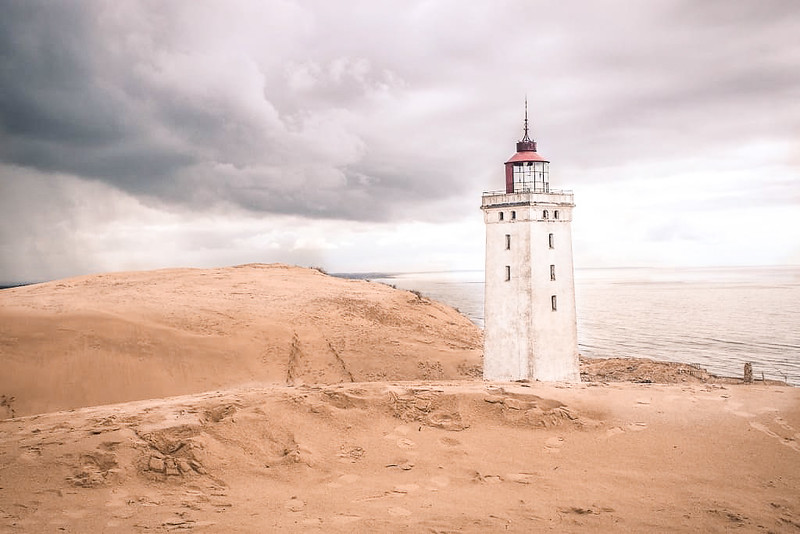
After (2020)

Going up
Visiting Rubjerg Knude is a unique experience because the landscape changes every day. It makes it feel deserted and somehow untouched.
Going up, you can feel the sand blowing against your skin. The wind can be quite strong and as you climb higher, it becomes even more powerful, especially at the top of the sand dunes.
You get an amazing view from up there and you can literally see the sand being blown up, creating small sandstorms across the dunes. The sea is clear and blue, and it’s an amazing place to view the sunset.
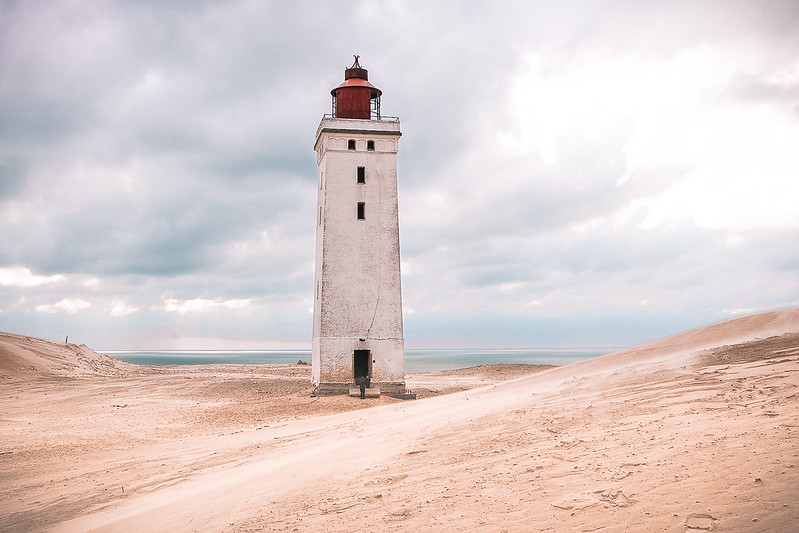
A mini desert – almost like Råbjerg Mile
I know I’m repeating myself here, but Northern Jutland is just the prettiest. I mean, you don’t find more beautiful, wild and untamed nature than up here.
One of the rare sights in Northern Jutland is Råbjerg Mile, which is somewhat similar to Rubjerg Knude. Just larger, not so close to the sea and without a lighthouse. Like Rubjerg Knude, Råbjerg Mile is a migrating sand dune that moves about 15 meters per year.
If you’d like to experience a (mini) Danish desert, head to Råbjerg Mile. It’s up near Skagen, about 1 hour’s drive from Rubjerg Knude.
Read next: How to visit Råbjerg Mile – Denmark’s largest sand dunes

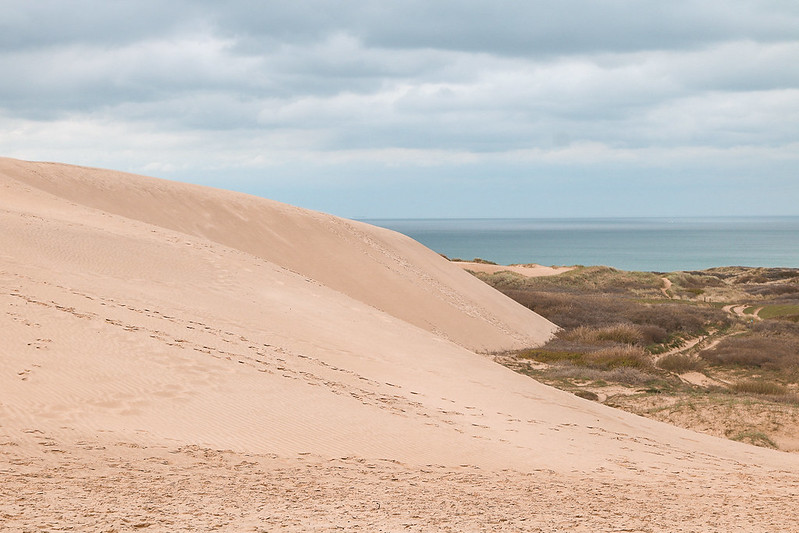

When to visit Rubjerg Knude
Actually.. I recommend off-season.
Yeah, I know, I always say that Denmark is best in late spring, summer or autumn, but here are some of the upsides you’ll get by visiting Rubjerg Knude in, say, January, March or November.
Some benefits:
- No crowds (big plus)
- Dramatic skies
- More vivid sunsets
- Better photos
- Comfortable cooling wind in your face as you fight your way up the sand banks
- You can really experience how Mother Nature calls the shots!
Read next: 12 mind-blowing places for nature in Denmark
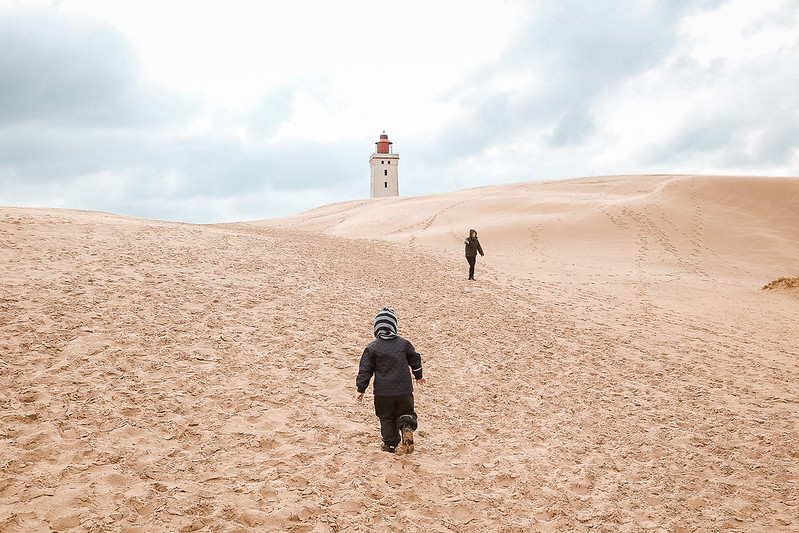


How to get there
Rubjerg Knude is located in Lønstrup, 15km west of Hjørring.
By car: It’s an easy drive and clearly signposted as you get closer. There’s a free parking lot with a bathroom and posters of general info.
By bus: Take bus No 80 from Hjørring to Lønstrup. Ask the driver to drop you off as close to Rubjerg Knude as possible.
Hiking to the top: You’ll walk on a wide sand trail until you reach the dunes. There’s already a trodden path up, but you can hike the dunes from whatever point you’d like. The sand is just more soft and difficult to conquer – but it’s totally doable. The last time I went, we were short on time, so I tried to run uphill to reach the lighthouse.
Have you ever tried running in deep sand?
No?
Well, let me just say that it’s DARNED hard. I must have sounded like a cat being strangled, wheezing and coughing desperately when I reached the top. People were staring. Someone even laughed.
But who cares. I made it to the top, and so can you.

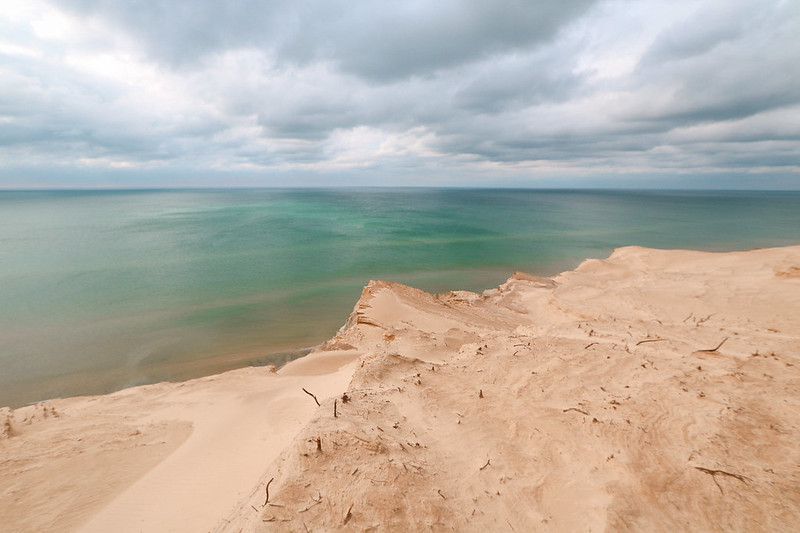
Practical info
- There’s a 1,5 km walk from the parking lot to the lighthouse. When you reach the sand, it’s straight up. Not suitable for wheelchair users, elderly or strollers.
- It’s free to enter, and you can visit day and night.
- You can go inside the lighthouse.
- Wear closed sandals or sneakers, not flip flops.

Nearby amazing places
Whether you plan to explore the area or just travel though, there are other nearby sights worth a visit. Like Tornby or Hirtshals Lighthouse.
Keramikcafe Møllehuset
5 mins drive
Keramikcafe Møllehuset is just down the road from Rubjerg Knude, and it’s a great place to enjoy an afternoon tea on Thursdays (loads of Danish cake) or a typical Danish lunch in a homely atmosphere. Make a reservation.


Hirtshals Fyr
30 mins drive
Just 24 km north is Hirtshals Lighthouse. It’s not as spectacular as Rubjerg Knude, but it’s still worth a visit. It has a beautiful backdrop of green hills and the North Sea. And it’s dotted with old German bunkers, which are an attraction in themselves.
You can climb to the top of the 35m high lighthouse for a magnificent view of the west coast, the sea and the town of Hirtshals. There’s also an exhibition and coffee lounge on site.
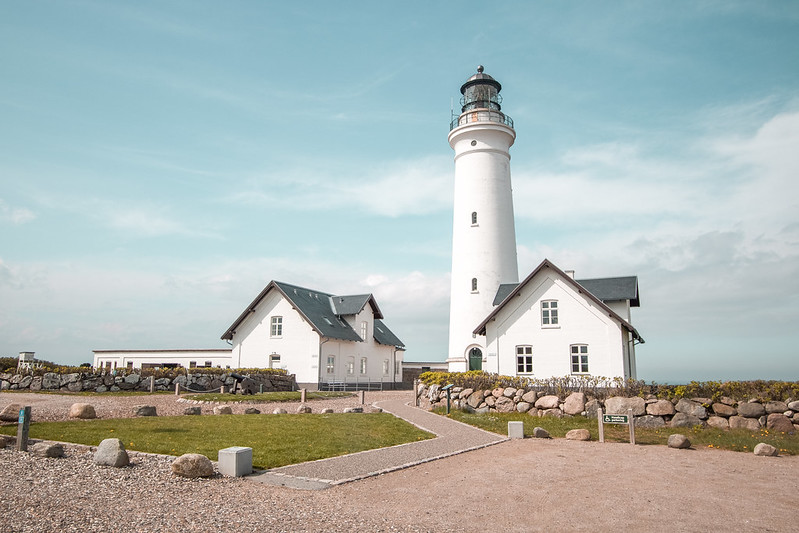
Tornby beach
50 mins drive
One of my favourite beaches in Denmark is Tornby. Like most of the beaches on the north-west coast (Løkken, Blokhus, Tversted and Skiveren), it’s very popular, but Tornby is special in a way. It’s dotted with cute summer houses and has a lovely little ice cream shop. Even if you visit off-season, it’s worth stopping by (both of the pictures below are taken off-season, in March).

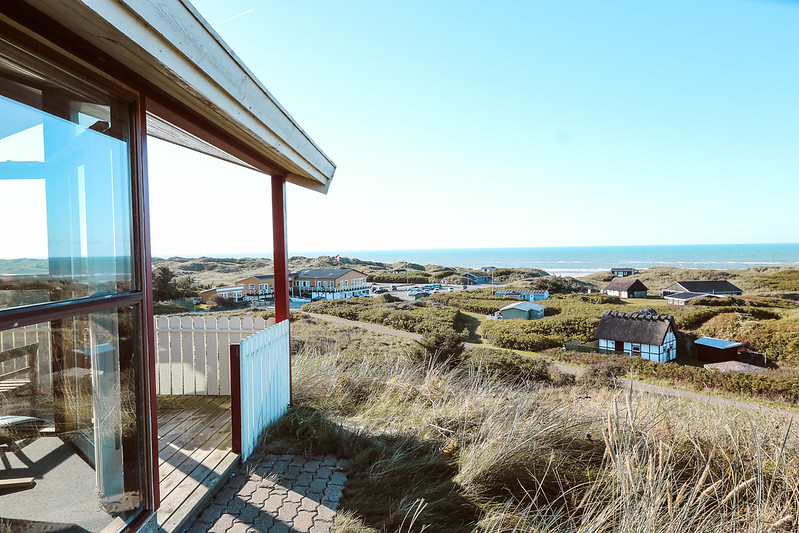
Planning to visit Rubjerg Knude Lighthouse? Ask me anything in the comments!
More stuff you’ll love:
- Must-see: 25 best places to visit in Denmark
- Summer: Summer in Denmark: 25 amazing activities
- Winter: Winter in Denmark: 15 hygge cold-weather activities
- Beaches: 12 best beaches in Denmark
- Nature: 12 mind-blowing places for nature in Denmark
- Camping: Camping in Denmark for beginners
- Wild camping: The ultimate guide to wild camping in Denmark
- UNESCO sites: Experience the 7 UNESCO sites in Denmark
- Danish food: 20 amazing dishes you must try in Denmark
Save for later
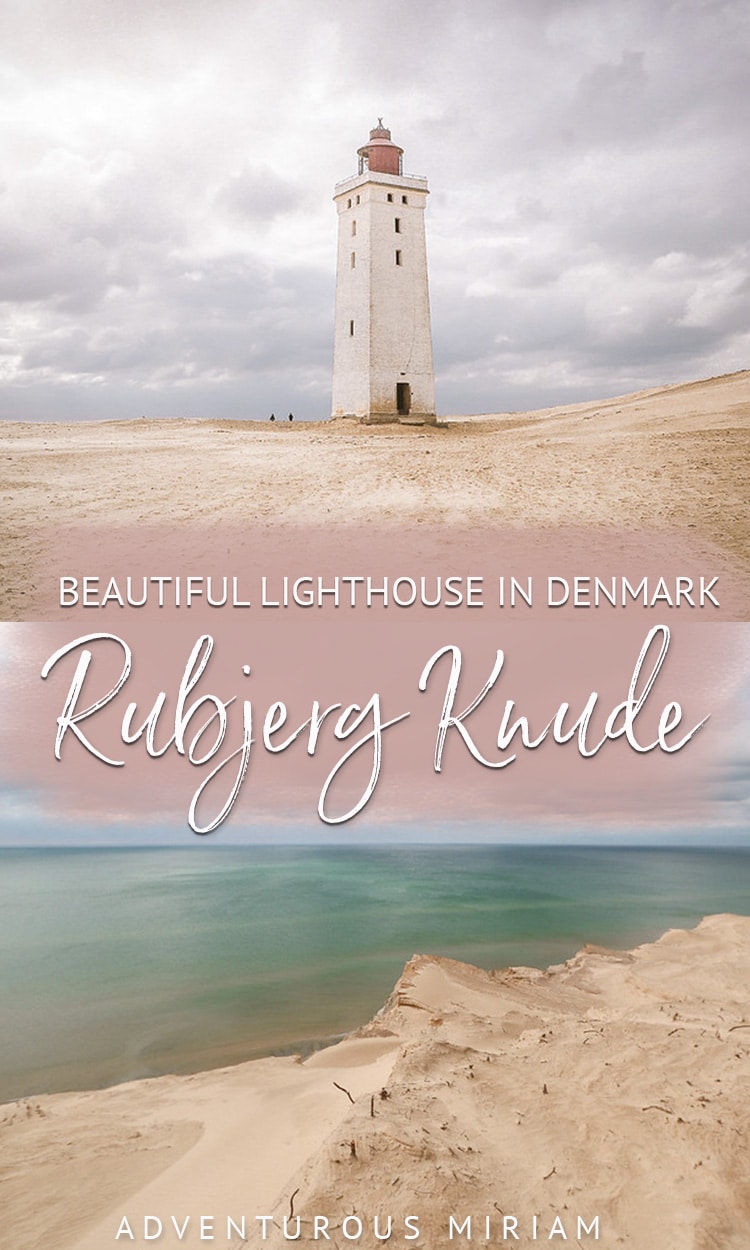

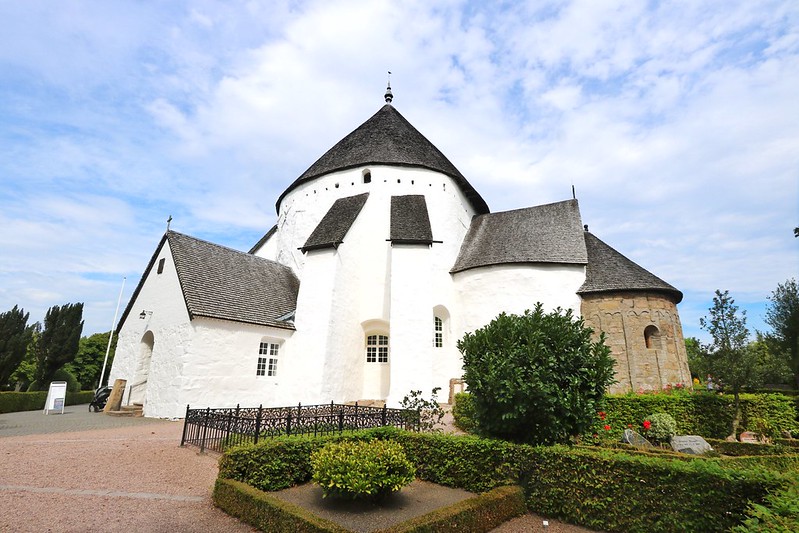

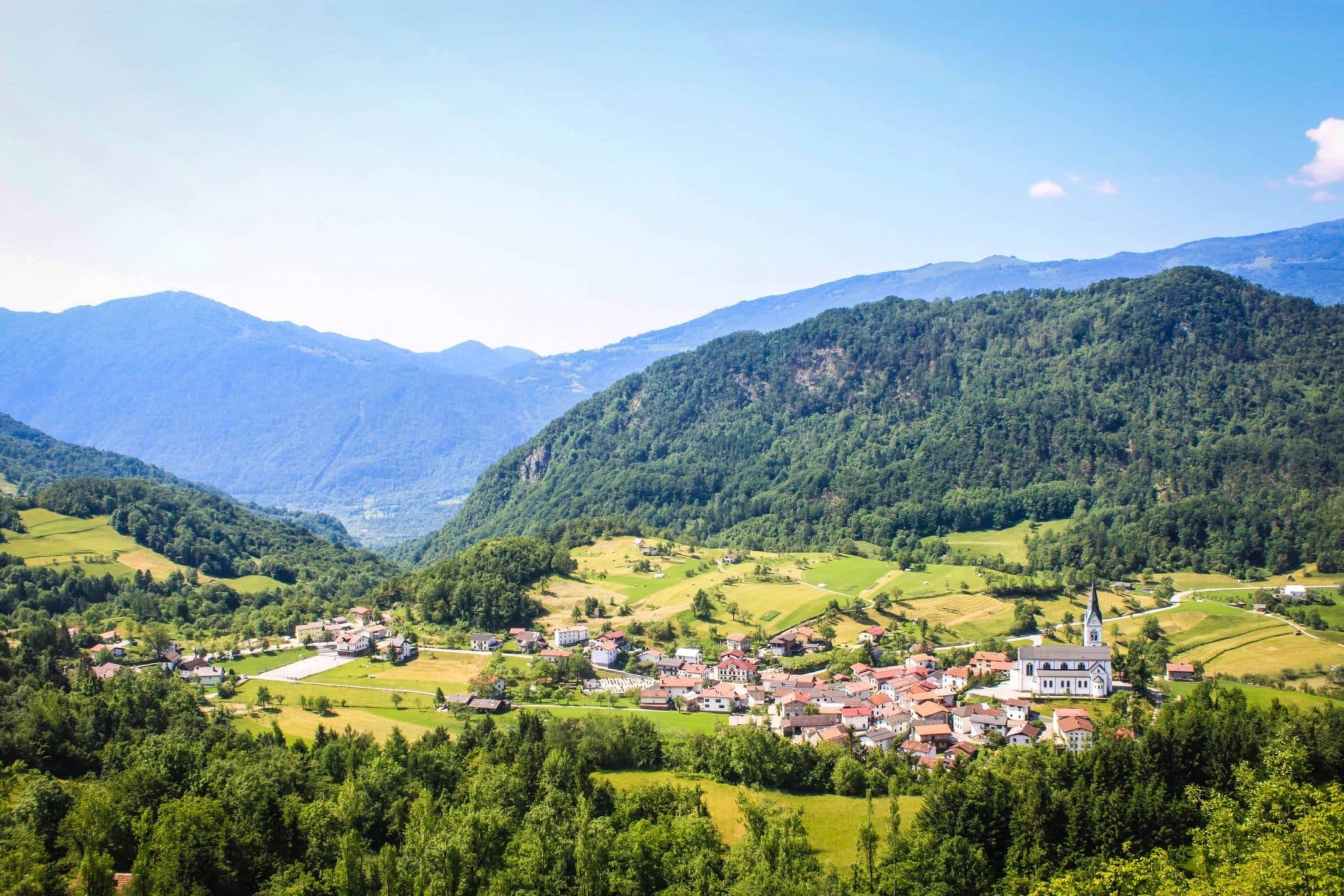

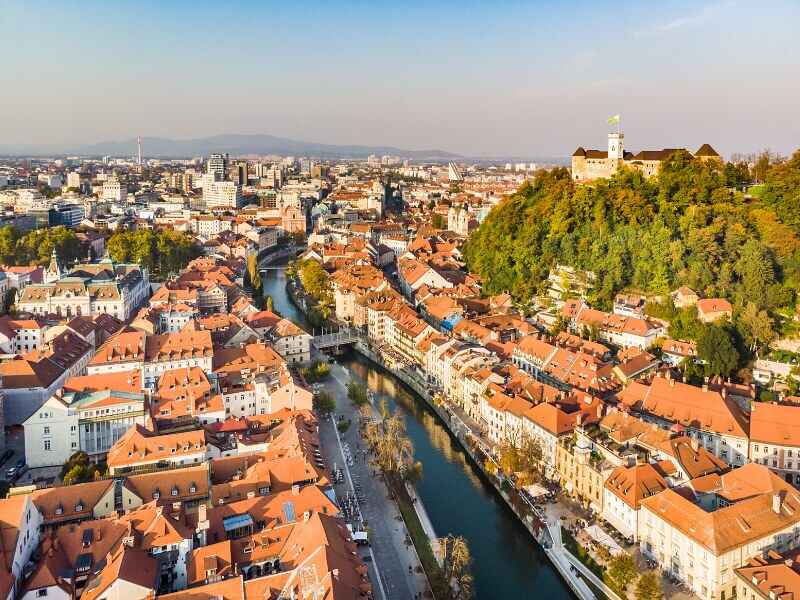

Hi, Miriam. Here’s Fabíola, from Brazil. Your site is awesome! Congrats!
Thanks so much, Fabiola! So nice of you to write 🙂